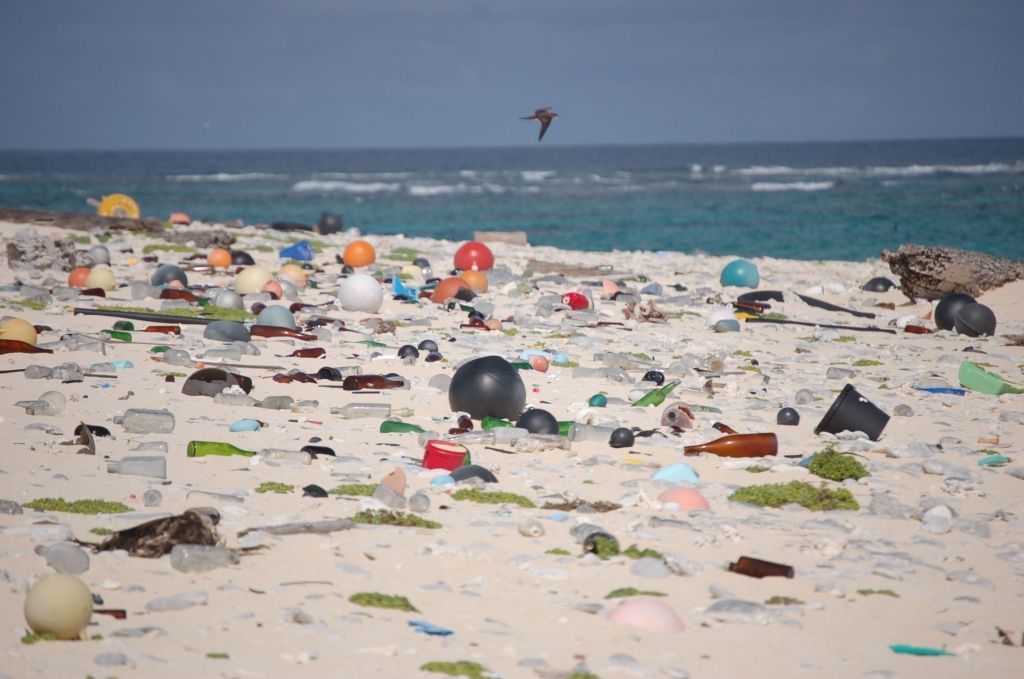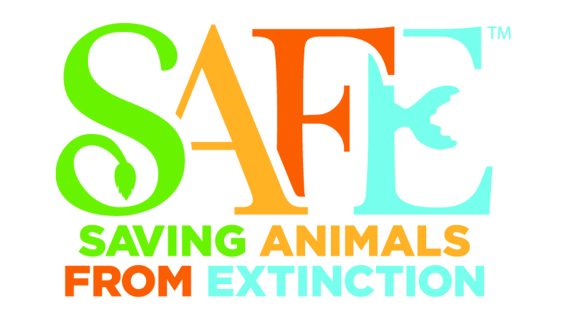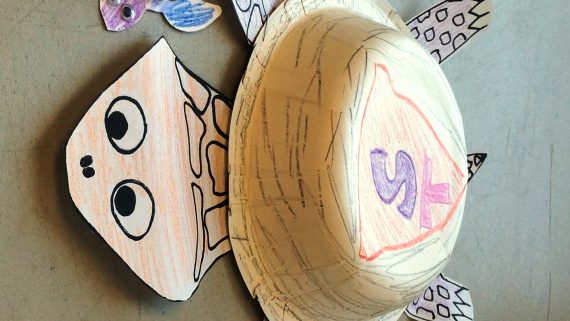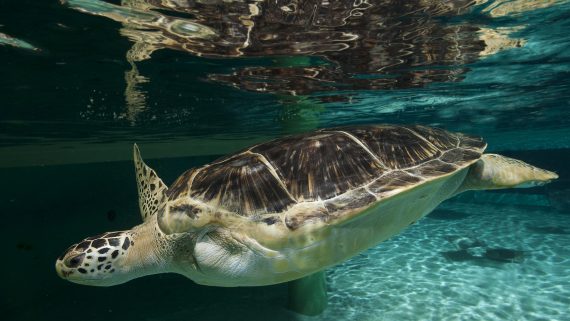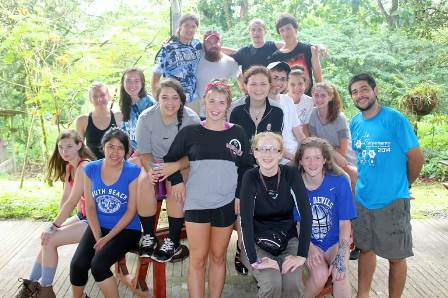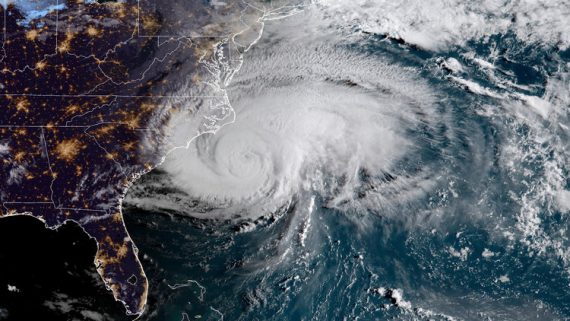Plastic Oceans
This week, we hear from Bonnie Monteleone from Plastic Ocean Project, Inc. Her ocean plastic art will be showcased at the Aquarium until December. Learn more about her work here.

Bonnie in front of her artwork.
Art is universally engaging. We do not even need to speak the same language to understand the message an artist wants to share. It creates a personal experience. Using plastics I collected from the ocean and mid-ocean islands, I electronically added them onto “The Great Wave Off Kanagawa,” one of the most recognized ocean-art pieces in the world. At a glance, the viewer is able to connect the problem to the beauty of the sea. Why the images are so large is to allow the viewer to be me, looking at the sea and noticing something isn’t right. And hopefully, the viewer will walk away wanting to be a part of making it right. The intention of making the art exhibit is to illustrate how much plastic we use everyday and how it ends up where it doesn’t belong. I had witnessed fish stuck in plastics, marine mammals entangled in plastics leaving sores, and have seen images of turtles disfigured by plastics.
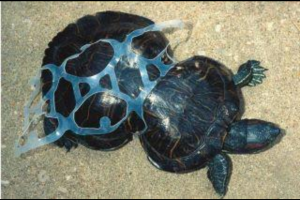
This turtle was caught in a six pack ring as a small turtle. Its shell grew around the plastic.
I have watched children in Brazil swimming as plastic fragments washed in. I have personally swam near certain beaches in Bermuda where there were lots of plastic fragments all around me. In Hawaii, I watched waves roll in full of broken plastic and I thought to myself, “People need to know this is happening.”
The broken pieces of plastics become bite size for fish and turtles too. All sizes of plastics invade their habitat, like Sagrassum that is a brown algae that floats and tends to collects plastics. Turtles, especially, like to visit this floating plant for protection and food.
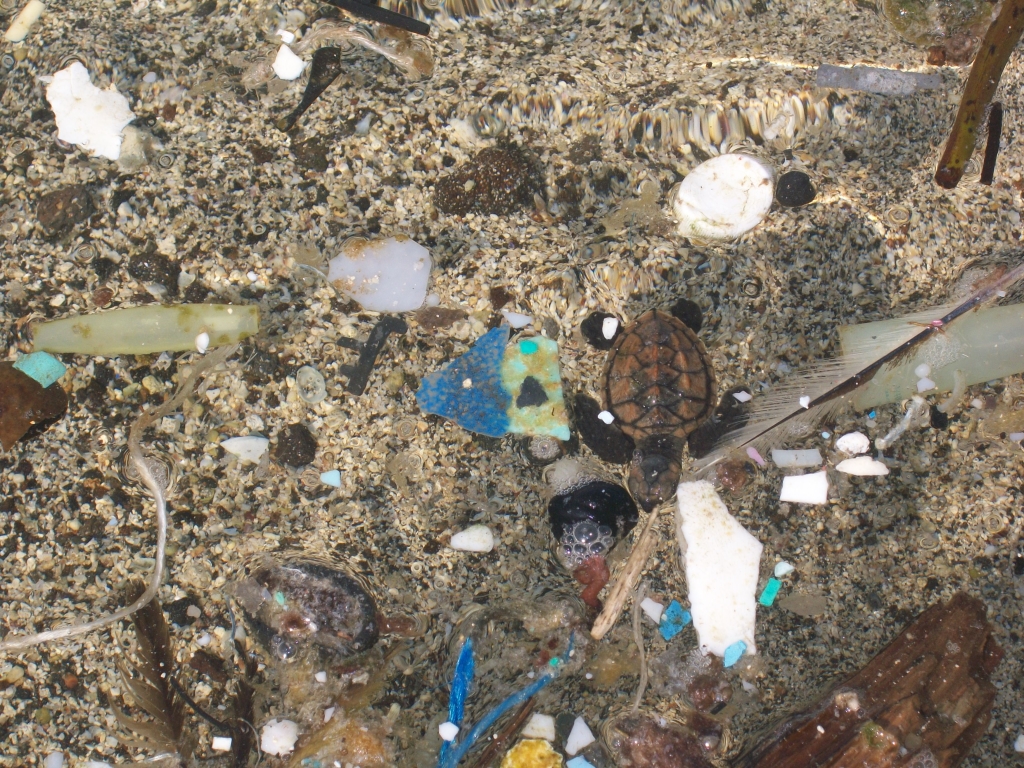
Can you find the sea turtle in this photo?
Sadly sometimes they mistake plastics for food. Some plastics look like jellyfish while others look like crabs.
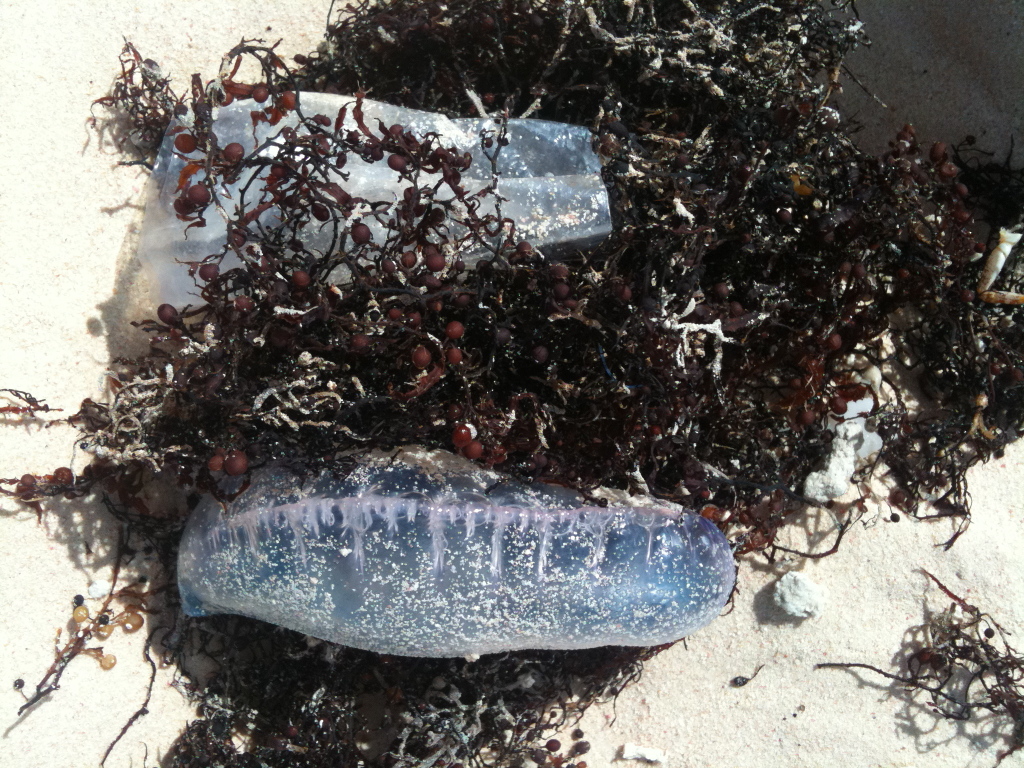
Can you tell which is a Portuguese Man of War and which is plastic?
My hope is that my art exhibit will inspire awareness that it doesn’t have to be this way. We can all reduce our one-time-use plastics and help cleanup the plastic trash we see on the ground.
Another interesting thing about plastic is it is made out of fossil fuels. So we use limited resources such as petroleum and natural gas, turn it into something we use once and then throw it away. Yet, it persists in the environment for up to 1,000 years. If you think about it, every piece of plastic you ever used is still on this planet somewhere and it will be for many generations to come. Very little of it is incinerated which is about the only way to make it truly go away. So, if we reduce our use of plastics, we will use fewer resources. This will lead to less plastic in the environment, and in turn will help protect our marine life.
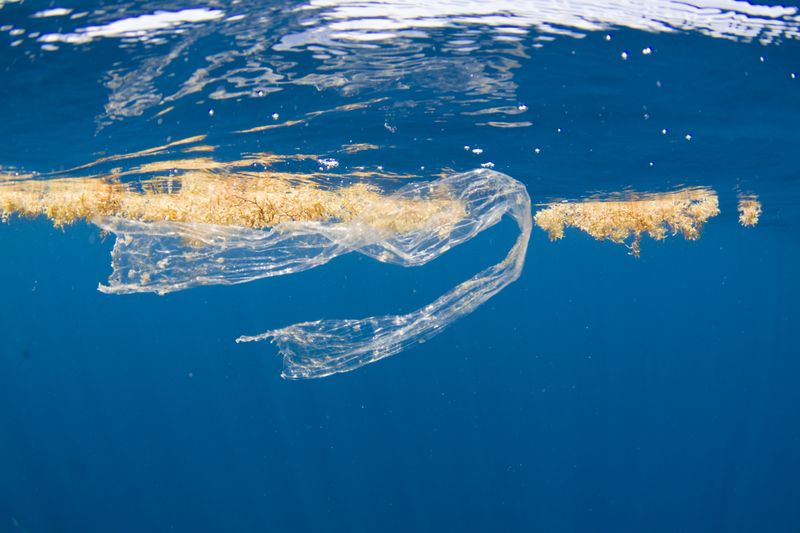
We want to thank Bonnie for her post this week. Learn more about how plastics impact sea turtles by reading our story, Womble’s Tale. Then learn more ways you can reduce your plastic use on our conservation page.
Our sea turtle hatchlings are growing quickly. This week Turtle A is 7.9 cm long and weighs 96.9 grams. Turtle B is 8.0 cm long and weighs 105.3 grams. Not sure what to do with this weight and length? Learn more in our Hatchling to Yearling lesson plan. Have you ever helped clean up trash from a beach you visited? What was the strangest thing you found? Share your story in the comments below!


